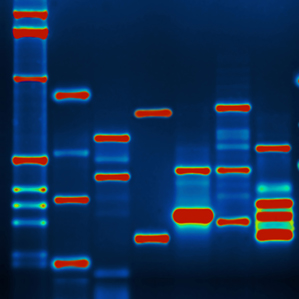Is DNA Sequencing Improving Our Understanding of Diseases?
Ten years after the human genome was first sequenced, much work still must be done to translate such knowledge into medical therapies. But here are some ways that new insights from genetic analysis are helping doctors understand the complex genetics behind some diseases, including some rare ailments.

More Populations
Comparing genomes across populations has given researchers insights about potential new ways of treating type 2 diabetes. In a study published in the Journal of the American Medical Association in June, researchers tried to get more details on the genetics of Latinos, who have a high prevalence of the disease. The scientists spent more than a decade sequencing the exomes—the part of the genome that codes for proteins—of more than 3,700 Mexicans and U.S.-based Latinos in four different studies. They uncovered a variant that occurred in 2 percent of Mexicans with type 2 diabetes, but increased the risk of the disease by four to five times. The study raises the prospect that drugs used to treat a rare version of diabetes could also benefit people with the genetic variant spotted in this study, though more research is needed.
Uncovering Origins
People of Ashkenazi Jewish descent are prone to rare genetic diseases like cystic fibrosis and Tay-Sachs disease and have a relatively high risk of more common diseases like Parkinson’s and breast cancer. A new study in Nature Communications explains how researchers analyzed the genomes of 128 healthy Ashkenazi Jews. Such information could be used to determine which common genetic mutations in that population do not necessarily cause a disease. Todd Lencz, an associate professor at Hofstra’s medical school, and Columbia University associate computer science professor Itsik Pe’er say they can now eliminate two-thirds of the false alarms that Ashkenazi Jews might otherwise get from a genetic screening test.
Under the Microscope
DNA sequencing data can help scientists glean information about rare diseases that may not be accurately diagnosed from just looking at patients’ symptoms. That was the case when two teams of researchers from Austria, the U.S., and the Netherlands uncovered the mutation behind a newly discovered disorder marked by a smaller brain and problems like seizures and motor defects. Those problems were not distinctive enough on their own to pinpoint the cause—they could have been caused by a few disorders. But after sequencing the DNA of thousands of children that had these neurological symptoms (and sequencing their families), the researchers found a mutation in seven families that did not correspond to an already known disorder. The study was outlined in two papers published in Cell last April.
Cancer Insights
Cervical cancer causes more than 7 percent of all cancer deaths in women worldwide, but scientists have known little about how mutations form in tumors and therefore drive the illness, limiting the potential for drugs to treat it. To better understand the disease, researchers from the U.S., Mexico, and Norway compared the genomes of cervical tumors and healthy tissue taken from the same patients. The researchers found 13 mutations linked to cervical cancer; eight were not previously associated with the disease, and two weren’t known to be linked to cancer at all. This finding is especially significant because one of those genes has already been shown to have a role in breast cancer, which means cervical cancer patients might benefit from existing therapies for that disease. The study appeared online in the journal Nature in December.
The takeaway:
DNA sequencing is beginning to yield important insights for certain diseases, and such developments figure to increase as more genetic data becomes available over the next several years. The British government has announced it will invest more than £300 million in a project to map 100,000 genomes by 2017 and match the DNA data with medical records.
Do you have a big question? Send suggestions to questionoftheweek@technologyreview.com.
Keep Reading
Most Popular
Large language models can do jaw-dropping things. But nobody knows exactly why.
And that's a problem. Figuring it out is one of the biggest scientific puzzles of our time and a crucial step towards controlling more powerful future models.
The problem with plug-in hybrids? Their drivers.
Plug-in hybrids are often sold as a transition to EVs, but new data from Europe shows we’re still underestimating the emissions they produce.
Google DeepMind’s new generative model makes Super Mario–like games from scratch
Genie learns how to control games by watching hours and hours of video. It could help train next-gen robots too.
How scientists traced a mysterious covid case back to six toilets
When wastewater surveillance turns into a hunt for a single infected individual, the ethics get tricky.
Stay connected
Get the latest updates from
MIT Technology Review
Discover special offers, top stories, upcoming events, and more.